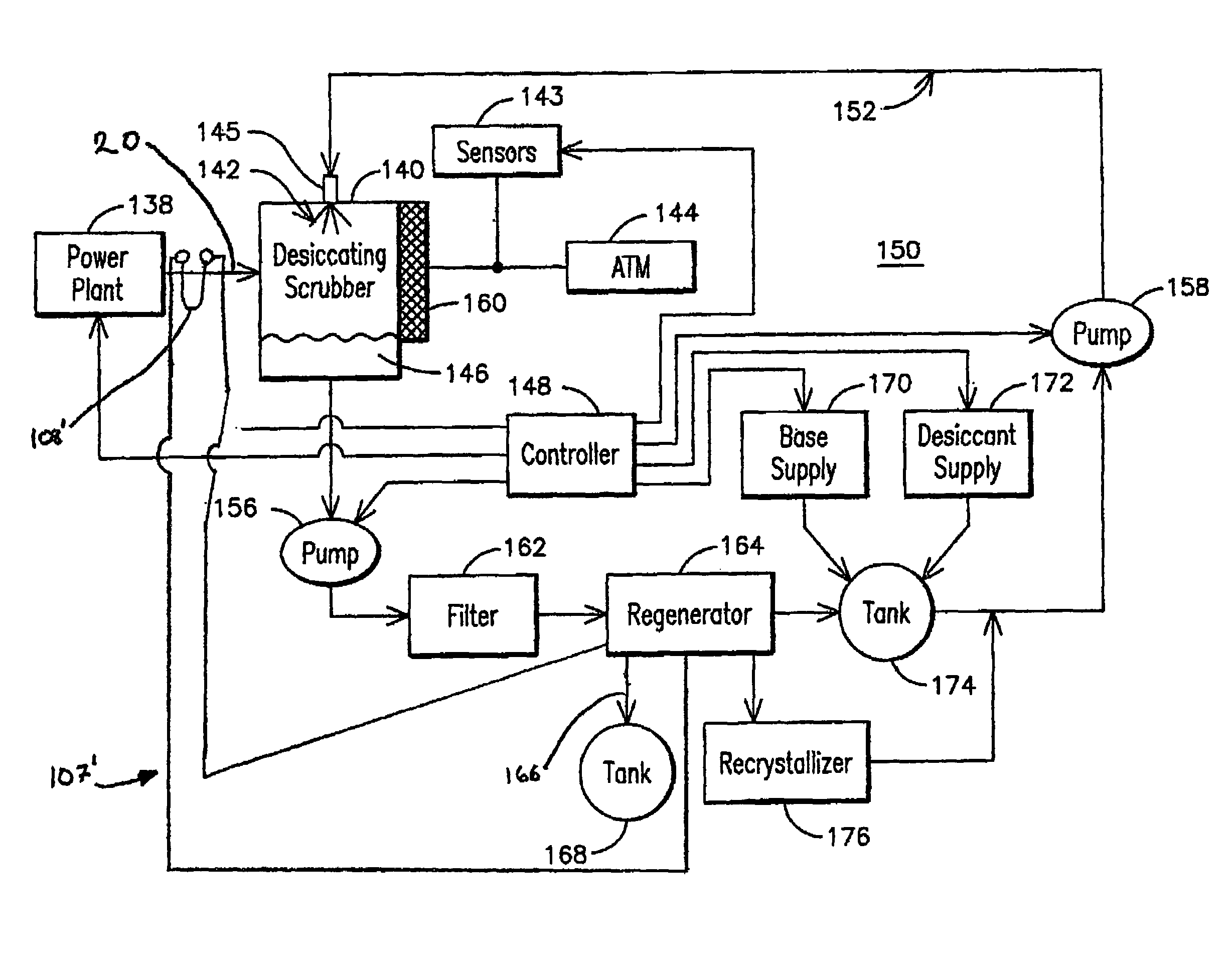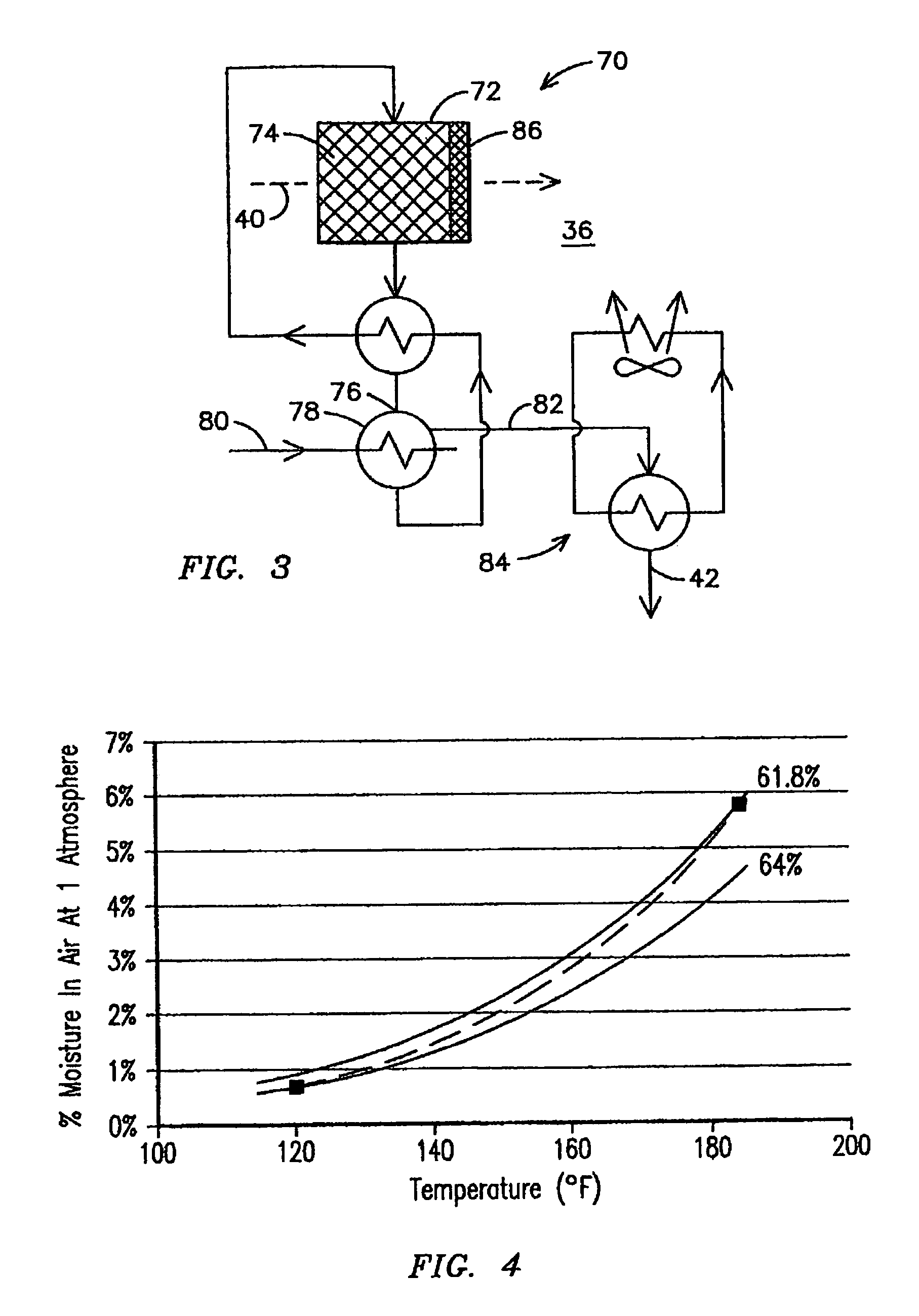Water and sulfur removal from combustion turbine exhaust
a technology of combustion turbine and exhaust water, which is applied in the direction of emission prevention, separation processes, lighting and heating apparatus, etc., can solve the problems of increasing difficulty, obtaining a permit to use water, and significant water cost in the process, and achieve the effect of reducing pressur
- Summary
- Abstract
- Description
- Claims
- Application Information
AI Technical Summary
Problems solved by technology
Method used
Image
Examples
Embodiment Construction
[0021]FIG. 1 is a schematic diagram illustrating an electrical generating power plant 10 utilizing a combustion turbine 12 as an engine. Combustion turbine 12, sometimes referred to as a gas turbine, incorporates components well known in the art but not illustrated in FIG. 1, such as a compressor, a combustor and a turbine. One such combustion turbine 12 is a Model 501F sold by Siemens Westinghouse Power Corporation, the assignee of the present invention.
[0022]The combustion turbine 12 combusts a flow of a fuel 14 such as natural gas, fuel oil, or other liquid or gaseous hydrocarbon fuel in a flow of air 16 to generate shaft power 18 and a stream of exhaust gas 20. The shaft power 18 is used to power an electrical generator 22 and / or other machinery. The exhaust gas 20 may be directed through a heat recovery steam generator 24 to generate steam 26. The steam 26 may be used for various applications within or outside the plant, including powering a steam turbine 28 for providing addit...
PUM
 Login to View More
Login to View More Abstract
Description
Claims
Application Information
 Login to View More
Login to View More - R&D
- Intellectual Property
- Life Sciences
- Materials
- Tech Scout
- Unparalleled Data Quality
- Higher Quality Content
- 60% Fewer Hallucinations
Browse by: Latest US Patents, China's latest patents, Technical Efficacy Thesaurus, Application Domain, Technology Topic, Popular Technical Reports.
© 2025 PatSnap. All rights reserved.Legal|Privacy policy|Modern Slavery Act Transparency Statement|Sitemap|About US| Contact US: help@patsnap.com



